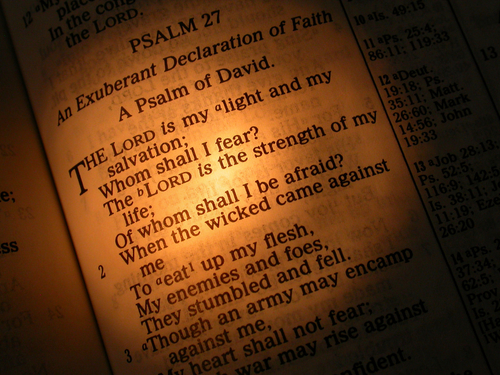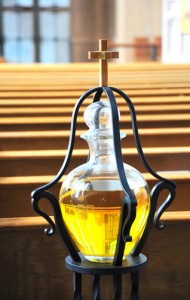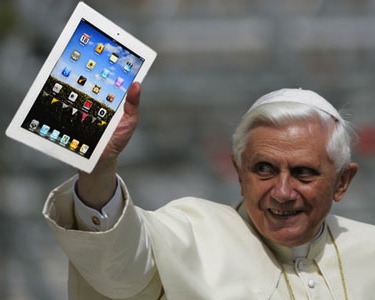Let’s drop the media criticism for a moment and have a bit of fun (about a topic that is actually pretty serious).
What was your first reaction if and when you saw this short news story? I’ll link to The Los Angeles Times take on it:
Digital white smoke signals may soon be rising on Twitter. The Vatican says Pope Benedict XVI will begin tweeting from a personal Twitter account, possibly before year’s end.
This clearly won’t rival Pope Benedict XVI’s first appearance on the St. Peter’s balcony –- or even his first appearance on Twitter. But it should give him a far more apostolic follower count than his Vatican account (some 28,000 faithful).
The 85-year-old Benedict first tweeted from that Vatican account last year. That’s when the Vatican launched a news portal. No one was really a fan of the handle @Pope2YouVatican. No word yet on the new handle. …
The Vatican says the Twitter account will belong to Benedict (though it’s likely he will write 140-character messages in longhand and let someone else do the actual tweeting).
That’s most of it, aside from the obligatory joke about the possibility that the pope will give up tweeting for Lent. Actually, this whole “give one thing up for Lent” story is rooted in myth, not Catholic (or Anglican or Lutheran or Orthodox) tradition, but that news hook lives on and on.
Anyway, if @Pope2YouVatican didn’t work, what do the headline writers in our cyber-midst think would be a better handle for Benedict XVI? What do you think the pope should try to accomplish with his Twitter account?
The latter question, truth be told, is connected to an interesting event that took place yesterday in Baltimore — when a pack of bloggers met with a smaller pack of bishops to talk about a new research report (click here for the document) on the state of Catholicism in social media. After spending several days deep down South (speaking at the Meek School of Journalism at the University of Mississippi), I rushed back to take part as the only non-Catholic on the main panel.
As you would hope, and expect, Ann Rodgers of The Pittsburgh Post-Gazette went the extra mile and covered the event. Another Godbeat veteran, Cathy Grossman of USA Today, was also there and I hope we see a report from her soon.
Meanwhile, you can also dig into a few of the remarks via, naturally, the event Twitter feed: #bpsblog
Here is the top of the Rodgers story:
BALTIMORE — The majority of Catholics use social media, but only the most ardent visit Catholic sites, which typically do a poor job of attracting fallen-away Catholics and those searching for a faith connection.
The statistics came from a study released just before the annual Baltimore meeting of the U.S. Conference of Catholic Bishops. About 25 bishops arrived early to learn from bloggers and other social media experts how to have a more effective online presence.
The gathering, sponsored by the bishops’ communications office, was modeled on a similar session held last year at the Vatican.
“Catholic media, at this point, is very effectively preaching to the choir … and to the very small percentage that agree with you on almost everything,” said panelist Terry Mattingly, religion columnist for the Scripps-Howard news service and co-founder of GetReligion.org, which analyzes religion coverage in secular media.
But if a bishop is trying to engage in evangelization without a sophisticated social media outreach, he said, “you have a promising future in ministry to the Amish.”
The study from the bishops’ research agency, the Center for Applied Research in the Apostolate at Georgetown University, showed that 62 percent of Catholic adults, including 37 percent of those 70 and older, have a profile on Facebook. Two-thirds of Catholic adults, including 84 percent of those 30 and younger, visit YouTube. Yet just 5 percent of Catholic adults with Internet access follow blogs related to the Catholic faith, though that number rises to 13 percent who attend Mass weekly. Despite a vigorous Vatican website and countless official and unofficial Catholic sites, 53 percent of more than 1,000 self-identified Catholics surveyed weren’t aware of a significant Catholic presence on the Internet.
Believe it or not, the subjects that interest Catholic readers the most — according to Center for Applied Research in the Apostolate — are church history and the lives of the saints.
Yes, much of the information was THAT inside baseball. Thus, I asked if bishops were willing and able to supply digital offerings linked to film, dating, family life, humor, liturgical music, books and other normal, everyday topics. Would anyone else be willing to join Cardinal Timothy Dolan in reaching out to the Comedy Central world?
The most stunning moment in the afternoon, for me, was supplied, naturally enough, by the unofficial czar of the Catholic blogosphere.
Several bloggers specifically mentioned problems with racist posts from professing Catholics. Rocco Palmo, whose “Whispers In the Loggia” blog on church leadership is nearing 25 million site visits, pointed out that 60 percent of Catholics under 30 in the United States are Hispanic, but the Catholic blogosphere doesn’t reflect that.
When he writes an annual post in Spanish for the Feast of Our Lady of Guadalupe, “I never get more angry, vitriolic hate mail,” he said.
He advised bishops to directly address bigotry online.
“We have a major problem when people in our church think they can get away with that and be in communion with the Catholic Church,” he said.
The bishops, in chorus, expressed several common concerns. Many were concerned that life in cyberspace would be too hectic, too shallow and too divisive. How could they keep up? Would any opinions they expressed be blown up into controversies?
Listen to these voices:
“I’m afraid of making a fool of myself,” said Archbishop Roger Schwietz of Anchorage, Alaska. “This is personality driven. What I’m used to is to focus on the message and stay out of the way.”
Bishop John Gaydos of Jefferson City, Mo., compared the digital age to the era that saw the birth of Christianity. “It spread like wildfire. You had the system of Roman roads … and the spiritual hunger of people who would go after any new mysticism,” he said.
Panelist Mary DeTurris Poust, who has spent a 30-year career in Catholic media, said Google searches for “Catholic” and related words are declining while searches for “spiritual” and its variants are rising.
“That should send up a warning flare,” said Ms. Poust, who blogs at “Not Strictly Spiritual.” “It reflects a virtual version of what we are seeing in [bricks-and-mortar] searches. People are searching, but they are not searching for us. … How do we reach Catholic adults who are disconnected from the church but are desperately seeking a spiritual connection?”
By all means, read all of the Rodgers story. Then you can turn to this Catholic News Service report. If you would, please point us toward other online reports about this gathering and this subject.
In the end, I concluded that the issue is not whether bishops should blog or tweet. That’s a question for each shepherd to make on his own. If you can preach, you can blog.
The key for me is whether the bishops can find talented Catholics — with or without collars — who are talented enough to write quality, provocative material that can attract and hold the overloaded eyes of modern Catholics, sort-of Catholics, young Catholics, ex-Catholics and, yes, unbelievers. Do these bishops have talented people on their staffs? If so, all they have to do is support them and work with them. Just do it.












